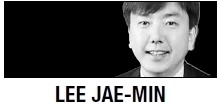Legal education in Korea has gone through seismic changes since the summer of 2007, when a bill to introduce a new “law school” system was passed in the National Assembly. A roller coaster ride is the term that perhaps best describes the Korean legal education environment since then. The ride has alternated between hopes and frustrations, and vacillated between expectations and disappointment.

Virtually everything changed. New buildings were built and new curricula adopted. New teaching methodologies were encouraged with the expansion of faculty membership. Bar exams of course went through an overhaul. One specific decision at the time was to “burn the bridges” to the old system: One of the preconditions imposed by the Ministry of Education for the approval of a new law school was that the applying school should close down its existing college of law. So came the 25 new law schools nationwide. Despite a roller coaster ride, progress has been observed, although it was slow coming.
Now, marking eight years since the introduction, proposals are now being submitted to put the plan in reverse and reconnect the bridges to the previous system. Since early this year, pleas have been made to preserve the conventional legal education and bar exam system, in tandem with the new system. Arguments have been that this parallel scheme would foster competition between the two systems and help produce better trained attorneys at the end of the day. The calls to amend the legislation and revive the old system have become louder during the past several months. The national debate is expected to reach a high point this coming fall.
The experience of the new legal education system for the past eight years has produced mixed results. People have observed many problems and identified new work to be done. The new law school system is by no means perfect and there are many areas that require fixing.
However, a proper overview of these problems would require the realization that they are the outcome of the fundamental changes to a system that had been in place for six decades. As with anything, a grace period is indispensable for a new system to take root before it thrives and prospers. Instead, for this particular subject, people have arguably been too quick to point to the problems and ask for a reversal.
Sometimes, a decision to go back is necessary. As they say, better late than never. But it still seems dubious whether the “discussions of problems” have indeed garnered sufficient consensus to throw it into reverse and go back to the previous route. Particularly so, if the original decision was a meticulous policy choice reflecting long debates and careful consideration at the time of introduction. Hefty prices have already been paid both figuratively and literally to introduce and test-drive the new system. To change course again, a national consensus should be confirmed that the problems are not merely transitional issues but structural in nature, and that this new system would not work ultimately. It is not clear yet whether such a consensus has been formulated.
The suggestion for parallel coexistence of the two systems is actually more complex than it seems. The coexistence of the two systems in the same legal education institution would bring about continuous logistical burdens, if not confusion. It is like having two different operating systems in the same computer — it may work, but only with a significant efforts and coordination. If anything, really it should be one or the other.
Problems need to be fixed. But the need to fix does not mean that we should go back all the way to the previous system. Sometimes there is a time to let bygones be bygones. We have come too far since 2007.
Bu Lee Jae-min
Lee Jae-min is an associate professor of law at Seoul National University. — Ed.








![[Graphic News] More Koreans say they plan long-distance trips this year](http://res.heraldm.com/phpwas/restmb_idxmake.php?idx=644&simg=/content/image/2024/04/17/20240417050828_0.gif&u=)
![[KH Explains] Hyundai's full hybrid edge to pay off amid slow transition to pure EVs](http://res.heraldm.com/phpwas/restmb_idxmake.php?idx=644&simg=/content/image/2024/04/18/20240418050645_0.jpg&u=20240419100350)






![[KH Explains] Hyundai's full hybrid edge to pay off amid slow transition to pure EVs](http://res.heraldm.com/phpwas/restmb_idxmake.php?idx=652&simg=/content/image/2024/04/18/20240418050645_0.jpg&u=20240419100350)

